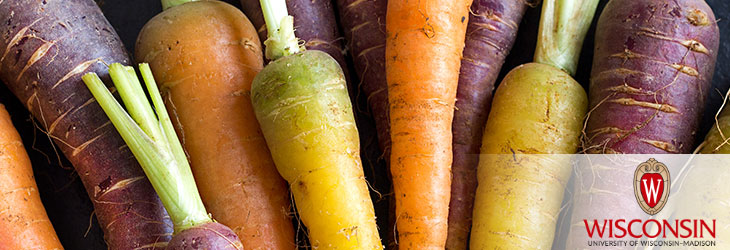Animals, Agriculture & Food

Optimizing Nitrogen Use Efficiency in Dairy Cattle
WARF: P140285US02
Inventors: Michel Wattiaux
The Wisconsin Alumni Research Foundation (WARF) is seeking commercial partners interested in developing software to economize herd nutrition and reduce damage to the environment caused by excess nitrogen waste.
Overview
Nitrogen in the livestock diet arises primarily from crude protein (CP) in feed. While needed for proper health and milk production, too much nitrogen in the diet causes high levels to be excreted into the environment. Nitrogen waste pollutes water and also comes at a financial cost to the farmer, who may be spending too much on high protein feed or overfeeding.
Currently there is no good method for optimizing dietary nitrogen in herds. The industry has explored ways to monitor levels of excreted nitrogen in the form of urea in milk and urine, and adjusting CP levels in the feed accordingly. But farmers are concerned that by dropping CP levels too low, cows will consume less feed and milk production will suffer.
Currently there is no good method for optimizing dietary nitrogen in herds. The industry has explored ways to monitor levels of excreted nitrogen in the form of urea in milk and urine, and adjusting CP levels in the feed accordingly. But farmers are concerned that by dropping CP levels too low, cows will consume less feed and milk production will suffer.
The Invention
A UW–Madison researcher has developed a simple algorithm to optimize nitrogen use efficiency based on values already measured in most dairy herds: milk urea-nitrogen yield (MUNY) and protein yield (PY) in milk. Once an ideal MUNY/PY ratio is identified through careful measurement, the value can be constantly monitored to determine if feed practices need to be adjusted. This kind of feedback can be provided within a day, unlike any other method.
Applications
- A nutritional and environmental management tool for the dairy industry
Key Benefits
- Innovative solution to a longstanding cost/contamination issue in the agricultural sector
- First method of its kind based on MUNY/PY ratio
- Uses values currently measured in the vast majority of dairy herds
- Enables feed adjustment within a day of measuring and interpreting data
Stage of Development
The researcher created the algorithm by analyzing a large data set from multiple farms. He then used it to predict relative nitrogen use efficiency (NUE) values and CP values in the feed given to cows in a University of Wisconsin herd, and found that the correlations he developed were sustained in further testing.
Additional Information
For More Information About the Inventors
Tech Fields
For current licensing status, please contact Emily Bauer at [javascript protected email address] or 608-960-9842